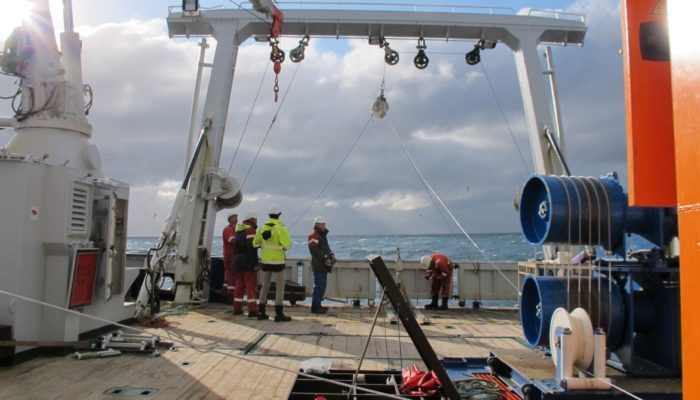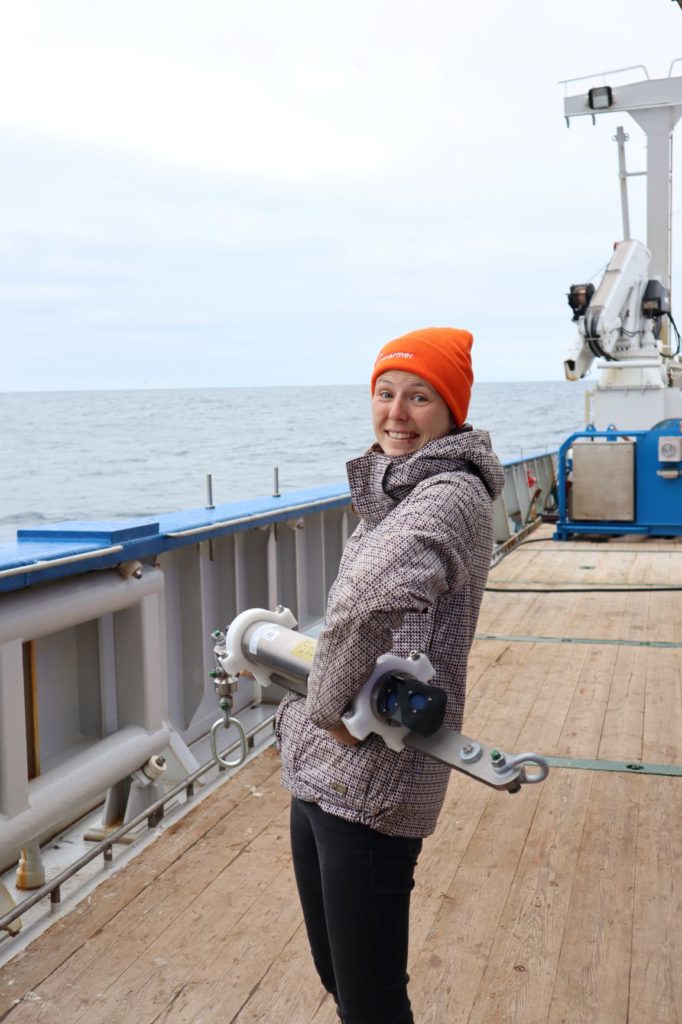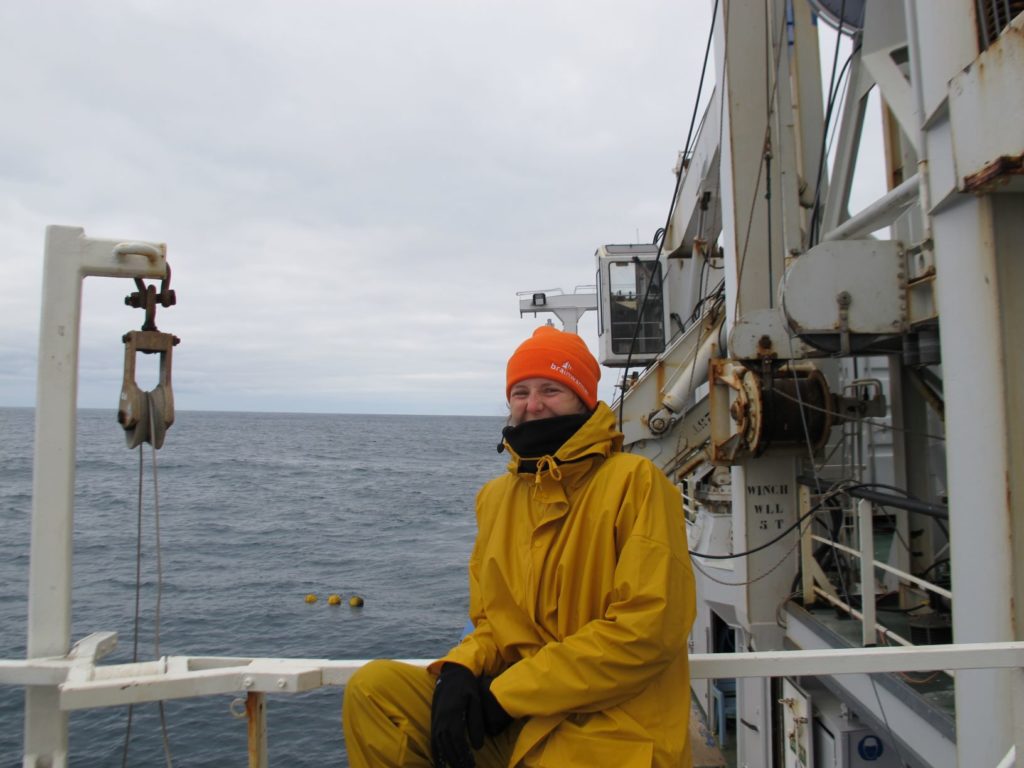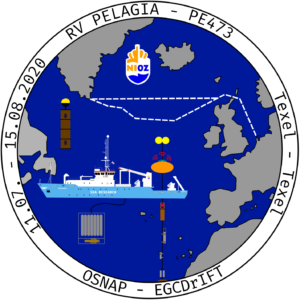
While the whole world is on stand-by we are in the middle of the North Atlantic and I want to explain you, why!
During those crazy times cruise planning also slightly changes. The original plan was to depart and arrive back in Reykjavik which would have only included a short transit to our research area, the OSNAP East section. In the end we had a 9 day transit from our homeport Texel, Netherlands to the southernmost tip of Greenland, Cape Farewell, where we finally started our work. This also included a self-quarantine of two weeks before boarding the Dutch Research Vessel Pelagia for both crew and scientists. The scientific party was also reduced from 12 to 6 people only. On board we had to keep the 1.5 m distance during the first two weeks. For the first test CTD with everyone we had to wear face masks and most of the labs were for two people at a time only.
This cruise is part of OSNAP, the Overturning in the subpolar North Atlantic program. OSNAP started in 2014 measuring the heat, volume and freshwater transport across the subpolar North Atlantic, and with that the status of the Atlantic Meridional Overturning Circulation (AMOC). Different countries installed mooring arrays from the western Labrador Sea towards Greenland and from Greenland to Scotland. So, this project is a huge international effort which is probably the reason why even in those times all OSNAP moorings will be serviced this year.
A mooring consists of a cable that is anchored to the sea floor and stands in the water column with instruments attached to it. Depending on the project, you can measure different parameters. Our instruments measure temperature, salinity and velocities. A drifter floats at the oceans surface along with the flow and can either send GPS position only or also measure temperature and/or salinity.
Our cruise focused on OSNAP East and especially on the NIOZ (Netherlands Institute for Sea Research) moorings in the Irminger Sea on the western side of the Reykjanes Ridge. Our program was completed by drifter deployments at Cape Farewell to investigate the freshwater pathways of the East Greenland Current towards deep convection regions (EGC-DrIFT: East Greenland Current – Drifter Investigation of Freshwater Transport).

Nora Fried with an Aquadopp to be redeployed. An Aquadopp measures velocities at a predefined depth of the mooring.
I can already say that we successfully recovered and redeployed all five moorings in the Irminger Current. Also 30 drifters are on their way. Both mooring and drifter recovery as well as deployment days were quite intense with the reduced number of people. But with a working schedule we managed reading out and redeploying instruments with CTDs happening in between. We even had time for a visit of the US R/V Neil Armstrong which was on its way back after intense weeks of mooring work in the western Irminger Sea. Our days were enlightened by groups of pilot whales coming by once in a while and also by a fin whale. Apart from that we mainly saw water, fog and some sunshine in between.
The NIOZ moorings are part of my PhD project about the Irminger Current. As a continuation of the North Atlantic Current the Irminger Current is responsible for northward heat and salt transport at the surface. At the same time overflow water from the Iceland-Scotland ridge is transport at depth. Finding out about the Irminger Current’s mean state, variability, its pathways along the ridge and its contribution to the AMOC is part of my PhD project. Meaning I am emotionally invested in the cruise and with every mooring suddenly appearing in the water you could see my face light up. Recovering a mooring has fascinated me since my first research cruise and I’m thankful that my PhD position gives me the opportunity to enjoy more of those unique moments.
Out in the ocean and after the two weeks of social distancing on board, life feels normal although we all know that we are just a small floating island while the world is holding its breath. Just yesterday we finished the last mooring and we will end our cruise with a CTD section towards the east until we finally head back to Texel.
Thanks a lot already to the crew of the R/V Pelagia who made our stay so nice and who are always there to help. And finally, a shout-out to our three master students who are very motivated to help even if it means spooling up cable for two hours or cleaning the instruments with a dishwashing brush.
Although we don’t know yet, to which world we will return we hope that we will be out here in two years to service the OSNAP moorings again.
Greetings from the Iceland Basin @ 58 37.32 N, 29 49.36 W!
Further Reading
- Blog Posts of NIOZ@Sea I OSNAP 2020
- OSNAP blog
Edited by Meriel Bittner


